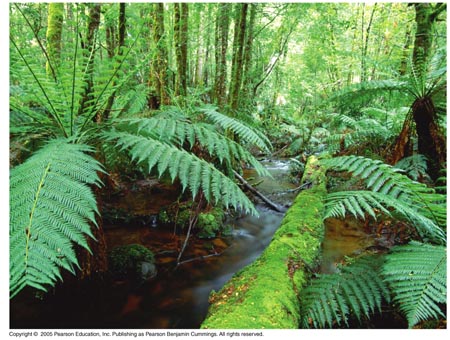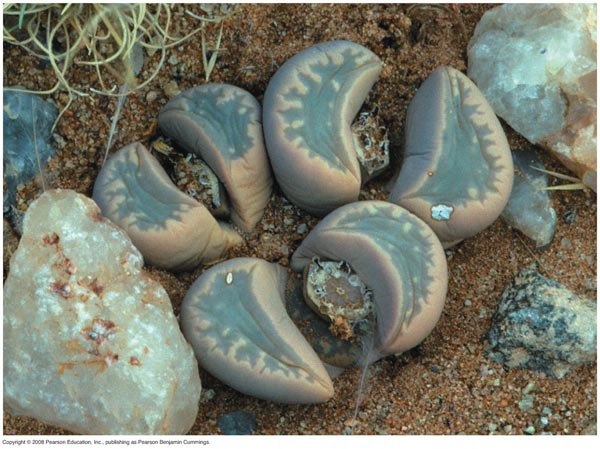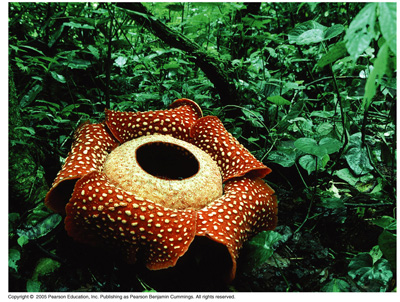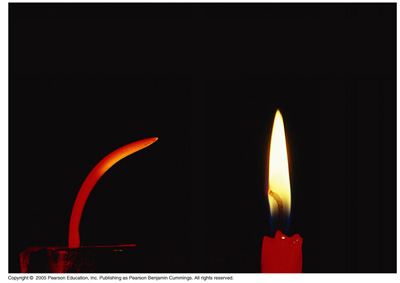FIVE: Plants
Campbell Chapters 35,36,38, and 39
Topic 5: Plants
5.5 Classification—Campbell chapter 26, 28, 29, and 30.
Assessment Statements
• Outline the binomial system of nomenclature. (5.5.1)
• List seven levels in the hierarchy of taxa—kingdom, phylum, class, order, family, genus and species—using an example from two different kingdoms for each level. (5.5.2)
• Distinguish between the following phyla of plants, using simple external recognition features: bryophyta, filicinophyta, coniferophyta and angiospermophyta. (5.5.3)
• Distinguish between the following phyla of animals, using simple external recognition features: porifera, cnidaria, platyhelminthes, annelida, mollusca and arthropoda. (5.5.4)
• Apply and design a key for a group of up to eight organisms. (5.5.5)

Chapter 29 Presentation-Plant Diversity I: How Plants Colonized Land
Chapter 30 Presentation-Plant Diversity II: The Evolution of Seed Plants
AHL Topic 9:
9.1: Plant Structure and Growth (HL only)—Campbell chapter 35.
Assessment Statements
• Draw and label plant diagrams to show the distribution of tissues in the stem and leaf of a dicotyledonous plant. (9.1.1)
• Outline three differences between the structures of dicotyledonous and monocotyledonous plants. (9.1.2)
• Explain the relationship between the distribution of tissues in the leaf and the functions of these tissues. (9.1.3)
• Identify modifications of roots, stems and leaves for different functions: bulbs, stem tubers, storage roots and tendrils. (9.1.4)
• State that dicotyledonous plants have apical and lateral meristems. (9.1.5)
• Compare growth due to apical and lateral meristems in dicotyledonous plants. (9.1.6)
• Explain the role of auxin in phototropism as an example of the control of plant growth. (9.1.7)

Chapter 35 Presentation-Plant Structure and Growth
9.2: Transport in Angiospermophytes (HL only)—Campbell chapter 36.
Assessment Statements
• Outline how the root system provides a large surface area for mineral ion and water uptake by means of branching and root hairs. (9.2.1)
• List ways in which mineral ions in the soil move to the root. (9.2.2)
• Explain the process of mineral ion absorption from the soil into roots by active transport. (9.2.3)
• State that terrestrial plants support themselves by means of thickened cellulose, cell turgor and lignified xylem. (9.2.4)
• Define transpiration. (9.2.5)
• Explain how water is carried by the transpiration stream, including the structure of xylem vessels, transpiration pull, cohesion, adhesion and evaporation. (9.2.6)
• State that guard cells can regulate transpiration by opening and closing stomata. (9.2.7)
• State that the plant hormone abscisic acid causes the closing of stomata. (9.2.8)
• Explain how the abiotic factors light, temperature, wind and humidity, affect the rate of transpiration in a typical terrestrial plant. (9.2.9)
• Outline four adaptations of xerophytes that help to reduce transpiration. (9.2.10)
• Outline the role of phloem in active translocation of sugars (sucrose) and amino acids from source (photosynthetic tissue and storage organs) to sink (fruits, seeds, roots). (9.2.11)

Chapter 36 Part I Transport in Vascular Plants
Chapter 36 Part II Transport in Angiospermophytes
9.3: Reproduction in Angiospermites (HL only)—Campbell chapter 38 and 39.
Assessment Statements
• Draw and label a diagram showing the structure of a dicotyledonous animal-pollinated flower. (9.3.1)
• Distinguish between pollination, fertilization and seed dispersal. (9.3.2)
• Draw and label a diagram showing the external and internal structure of a named dicotyledonous seed. (9.3.3)
• Explain the conditions needed for the germination of a typical seed. (9.3.4)
• Outline the metabolic processes during germination of a starchy seed. (9.3.5)
• Explain how flowering is controlled in long-day and short-day plants, including the role of phytochrome. (9.3.6)

Chapter 38 Presentation-Angiosperm Reproduction and Biotechnology
9.3: Reproduction in Angiospermites (HL only)—Campbell chapter 38 and 39.
Assessment Statements
• Draw and label a diagram showing the structure of a dicotyledonous animal-pollinated flower. (9.3.1)
• Distinguish between pollination, fertilization and seed dispersal. (9.3.2)
• Draw and label a diagram showing the external and internal structure of a named dicotyledonous seed. (9.3.3)
• Explain the conditions needed for the germination of a typical seed. (9.3.4)
• Outline the metabolic processes during germination of a starchy seed. (9.3.5)
• Explain how flowering is controlled in long-day and short-day plants, including the role of phytochrome. (9.3.6)

Chapter 39 Presentation-Plant Responses to Internal and External Signals

